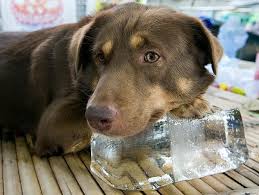Burn wounds are injuries to the skin and underlying tissues caused by heat, chemicals, electricity, or radiation. The severity of burn wound can vary from mild to life-threatening, depending on the extent and depth of the damage.
Burn wounds in pets can result from various sources such as heat, chemicals, electricity, or radiation. These injuries can cause severe pain, infection, and long-term damage if not treated properly. In this comprehensive guide, we’ll explore the causes of burn wounds in pets, identify symptoms, discuss effective treatments, outline prevention strategies, and answer frequently asked questions.
Common Causes of Burn Wounds in Pets:
- Thermal Burns:
- Caused by exposure to hot surfaces, liquids, or flames.
- Chemical Burns:
- Result from contact with caustic substances such as acids, alkalis, or household cleaners.
- Electrical Burns:
- Occur when pets chew on electrical cords or come into contact with exposed wires.
- Radiation Burns:
- Can be caused by prolonged exposure to UV light or radiation therapy.
Clinical Signs of Burn Wounds in Pets:
Early Signs:
- Redness and swelling
- Blistering or peeling of the skin
- Pain and discomfort
- Singed fur or hair loss
Advanced Signs of burn wound:
- Deep, open wounds
- Blackened or charred skin
- Infection (pus, foul odor, increased redness)
- Shock (pale gums, lethargy, rapid breathing)

Treatment for Burn Wound in Pets:
Immediate Care:
- Cool the Burn:
- Rinse the affected area with cool (not cold) water for at least 10-20 minutes to reduce heat and prevent further tissue damage. Avoid using ice.

- Protect the Burn:
- Cover the burn with a sterile, non-stick bandage or clean cloth to protect it from contaminants and reduce pain.
- Seek Veterinary Attention:
- Promptly take your pet to a veterinarian for professional assessment and treatment.
Veterinary Care:
- Pain Management:
- Veterinarians may administer pain relief medications to alleviate discomfort.
- Wound Cleaning and Debridement:
- The burn wound will be cleaned and any dead tissue will be removed to prevent infection and promote healing.
- Antibiotics:
- Topical or systemic antibiotics may be prescribed to prevent or treat infection.
- Fluid Therapy:
- Intravenous fluids may be necessary to maintain hydration and support recovery.
- Bandaging:
- The wound will be dressed with appropriate bandages that need to be changed regularly.
Prevention Strategies:
Avoid Exposure to Heat Sources:
Keep pets away from hot stoves, open flames, and other heat sources. Use barriers to prevent access if necessary.
Store Chemicals Safely:
Store household chemicals and cleaners out of reach of pets to prevent accidental ingestion or contact.
Electrical Safety:
Keep electrical cords and wires out of reach or use protective coverings to prevent pets from chewing on them.
Sun Protection:
Limit pets’ exposure to direct sunlight, especially during peak hours, and consider using pet-safe sunscreen for those with thin or light-colored fur.

Conclusion:
Burn wounds in pets are serious injuries that require immediate and proper care to prevent complications and ensure healing. By understanding the causes, recognizing the symptoms, and knowing how to treat and prevent burn wounds, pet owners can help their furry friends recover quickly and safely. Always consult with a veterinarian for professional care and follow their guidance for the best outcomes. A well-cared-for pet is a happy and healthy pet!
- For more details about burn wound [Click Here]
FAQs :
Q1: How can I tell if my pet’s burn is severe?
A1: Severe burns may involve deep, open wounds, blackened or charred skin, and signs of infection or shock. If in doubt, seek veterinary attention immediately.
Q2: Can I use home remedies to treat my pet’s burn wound?
A2: While some home remedies may provide temporary relief, it is essential to seek veterinary care for proper diagnosis and treatment. Improper treatment can worsen the condition.
Q3: How long does it take for a burn wound to heal in pets?
A3: Healing time varies depending on the severity of the burn and the effectiveness of treatment. Minor burns may heal within a few weeks, while severe burns can take months to heal.
Q4: Can burn wounds lead to long-term complications in pets?
A4: Yes, severe burns can result in long-term complications such as scarring, loss of mobility, and chronic pain. Prompt and proper treatment is crucial to minimize these risks.
Q5: What should I do if my pet is in shock after a burn?
A5: If your pet shows signs of shock (pale gums, lethargy, rapid breathing), keep them warm, calm, and seek immediate veterinary attention.

